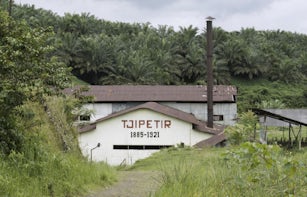The post-1968 militant video production by French feminist collectives presented here is more than a time capsule of actions. It reflects a historical tradition of political engagement and demonstrates the beginning of direct and unapologetic use of portable recording technology. Today, its initial promise and power are even more apparent. Fast forward fifty years and France is facing its worst political crisis since at least May 68. For six months, the Yellow Vests (Gilets Jaunes) have taken to the streets. They have made available through Facebook, Instagram and YouTube innumerable unedited videos, many of which are portraits that give voice to the voiceless. Despite national and international media contempt and indifference, independent recordings of demonstrations attest to the very existence of the movement. Significantly also, the videos serve as indisputable evidence of extraordinary police and state violence, censorship and manipulation, reversing the usual power relations by using video surveillance collectively against authority. — SJ

The ongoing reconstruction of early video’s history shows a wider usage of the medium at its start than previously thought, and particularly an expanded relationship to performance, documentary and archives. Also coming to light is the sociopolitical substance of its content, and the leading role of women in exploiting video as a new audiovisual medium. In France women developed a militant practice with video soon after the Sony Portapak camera became available in 1968. Their production and activities remain, even today, almost undocumented, and to a certain extent this stems from their anti-institutional and anti-establishment position. However, these collectives, whose members rarely identified themselves as artists, created the majority of the video produced in France in the 1970s, and arguably represent the first generation that truly and independently used video. Their example brings up several questions, such as why video became such a privileged medium for collectives, especially those composed of women.01 Was video instrumental in the process of women’s emancipation and self-representation and, beyond, in the constitution of themselves as individuals and as a collective unit? And finally, how did early video cope with the limited conditions of distribution available at the time, and what is the current status of this production?
The adoption of video by women was certainly a gesture of disobedience and emancipation. The video historian Anne-Marie Duguet recalls that in the 1970s opportunities for women to embrace careers in technology were limited by familial and social pressures. 02By contrast, video was a new and open medium not yet appropriated by men and not even taught in art schools or universities. Thus it spread through female communities after a few women, who were either self-taught or had trained at places such as The Kitchen in New York, started organising video workshops for other women. Carole Roussopoulos organised such training sessions in Paris in 1975. Originally from Switzerland, Roussopoulos moved to Paris in 1967 to study art history at the Sorbonne. In 1969, she is said to have been the first woman to buy a video camera in France (and the second person after Jean-Luc Godard). 03 In 1975, in her ‘Introduction to Video’ workshop held in her apartment in the fourteenth arrondissement, she met the translator Ioana Wieder and the actress Delphine Seyrig; 04 together they founded the collective Les Femmes s’amusent (Women Are Having Fun), later renamed Les Insoumuses, and created some of the most significant videotapes from the time. ‘Insoumuses’ was a neologism combining ‘insoumise’, which translates as ‘disobedient’, and ‘muses’, a word sharing the same signification in both French and English and customarily thought of as referring to female personifications for artistic inspiration.
The collective was the organisational mode most commonly associated with early video production in France. The cost of purchasing new technology — video was cheaper than film, but still relatively expensive — encouraged the tendency to work in couples, groups or collectives. However, beyond sharing equipment, technical skills, common interests and ideas, collectives also represented for women in France a new societal behaviour that perpetuated some of the ideals and ethics that had been envisioned and experimented with during May ’68, particularly those concerning better relations between genders and classes. Thus, collectives developed as flexible and anti -authoritarian structures that opposed sexism and exclusion — forms of oppression women had experienced in other audiovisual media, such as television and cinema, as well as more generally at the workplace. Early video in France coincided with the emergence of second-wave feminism, for which the lack of women-led organisations was a major concern. As early as 1949, in her crucial book The Second Sex, Simone de Beauvoir explained:
Women lack concrete means for organising themselves into a unit which can stand face to face with the correlative unit. They have no past, no history, no religion of their own […] They live dispersed among males, attached through residence, housework, economic conditions and social standing to certain men — fathers or husbands — more firmly than they are to other women.05
Along with de Beauvoir, whom they considered an inspiration and an encouragement, the women who started meeting regularly in the spring of 1970 at the amphitheatre of the École des Beaux-Arts in Paris recognised that the creation of female organisations fighting women’s seclusion and misinformation was critical for their emancipation.
That same year, they formed the MLF, or Mouvement de Libération des Femmes (Women’s Liberation Movement), which became the first and foremost feminist organisation active in France in the 1970s.
Gender and Class Struggle in the Workplace
Though early video embraced a diversity of causes — domestic violence, rape, prostitution, abortion rights, dictatorship, homosexuality and female sexuality — production in France in the 1970s significantly centred on women’s experiences at work, especially in factories, where they were predominantly employed. The prerogative of women to work gained urgency in the precarious economic conditions of the time, especially following the 1973 oil crisis, when women’s jobs were often the first to be lost. The situation resulted in numerous women-led strikes. The most significant production on this topic was a series of six videos titled LIP, created between 1973 and 1976 by Carole Roussopoulos with Vidéo Out, the collective she founded with her husband, Paul Roussopoulos. LIP was a watch factory in Besançon, in eastern France, with a workforce that was more than seventy per cent female, and which became the scene of massive demonstrations from 1973 to 1976. In LIP, Carole Roussopoulos makes women the main subject, the video alternating between footage of demonstrations and extensive testimonials by LIP workers. Immediate and personal histories unfold slowly over each interview. Roussopoulos understands that video gives voice not only to her as a director, but also, perhaps especially, to those who stand in front of her camera. In LIP her camera is attracted to charismatic female personalities; there is Monique, for example, whom Roussopoulos met among a crowd of demonstrators while shooting LIP 1: Monique, the first video of the series, in 1973. 06 Monique reappears regularly in the series to share her experiences of the conflict and discuss the intricacies of the factory world and the place of women as workers. In particular, she explains that women organised themselves during the strike into a unit, which she describes as a major change in comparison to the arrogant, ‘petit bourgeois’ atmosphere that used to reign in the factory, especially among women. As the LIP project unfolds, Roussopoulos confronts the experiences of different women, which allows a diversity of viewpoints on the social conflict; for example, in LIP 5, realised in 1976, Christiane stands out in a video-portrait in which she articulates at length her experience with the factory unions, and her difficulties in being listened to by her male representatives as she tries to integrate herself into the union as an active member. In the 1970s, French unions were still a patriarchal bastion of the industrial sector that resisted women’s participation, even at LIP, despite its largely female workforce.
Beyond the gender struggle, the LIP series also exposes disguised class issues among female workers. Monique and Christiane, for example, represent different classes of employees in the factory’s hierarchy: Monique is part of the administrative staff, while Christiane is a manual worker. Both explain that, before the social conflict broke out, they were not used to communicating with one another; however, during the strike they share the possibility of being laid off from their jobs, which leads them to an awareness, as women, of mutual difficulties and restrictions. LIP demonstrates that in the 1970s the class struggle had also infected the industrial sector: in other words, what Monique formulated as the ‘petit bourgeois’ behaviour that divided female factory workers into different castes was typical of the correlation between gender and class issues in the workplace.
The LIP video series was not the only production addressing this topic; Grève des femmes à Troyes (Women’s Strike in the City of Troyes, 1971) is commonly accepted as the first feminist video produced in France. It was created by five women from the MLF, who, in an act of solidarity and with no previous experience in video, travelled to Troyes to record the first women’s strike in a hosiery factory there. 07 Again the production is dedicated to a charismatic woman worker, Doudou, who remains at the centre of the camera’s eye for 55 minutes, relating with eloquence and passion the occupation of the factory and the camaraderie among the women, both unlike anything she has ever experienced before.
Common to this type of video production was the use of the camera to record interviews, making the video-portrait a key genre for early video. Encouraging individual expression, the productions lacked scripts and were characterised by unedited recording and anti-acting qualities, contrasting with the finished quality of narrative cinema. There were also technological possibilities and limitations specific to video in its early stages of development that explain the resulting realist quality of this production. Indeed, the endless and uninterrupted recordings of personal histories so common at the beginning of video can be explained by the relative affordability of videotape, along with the absence of editing technology. 08 The ability to record in real time and erase any unwanted takes quickly created a climate of spontaneity and confidence between director and subject that did not exist in cinema.09 Because of this, video allowed more fluid exchanges and communications among participants, who were most commonly anonymous or amateur. In fact, videos by women’s collectives were rarely signed, or were done so only with the first names or nicknames of their participants. This obviously negated authorship as an individual creative gesture and, by contrast, contributed to the formulation of a collective expression allied with the formation of a climate of sisterhood.
Institutional Criticism and Counter-Information
Also at stake was video’s ability to offer a more democratic and egalitarian experience than other audiovisual media could, television in particular. Television’s status as a public service funded and overseen by the French state, the massive invasion of TV sets in French households in the 1960s and television’s total interruption of emission during the events of May ’68 had raised suspicions and singled out the medium as a target for militant video. The video Maso et Miso vont en bateau (Maso and Miso Are in the Same Boat, 1976), for instance, focuses on the climate of misogyny and sexism still dominant in French television in the 1970s. 10 Videos by women’s collectives were rarely signed, or only with the first names or nicknames of their participants; this obviously negated authorship as an individual creative gesture and, by contrast, contributed to the formulation of a collective expression allied with the formation of a climate of sisterhood.
Maso and Miso was created by Les Insoumuses from a recording by Delphine Seyrig of a television show that aired on Antenne 2 (Channel Two) and was hosted by Bernard Pivot, a journalist and interviewer known today as one of French television’s erudite personalities but who was famous in the 1970s for his provocative and caricaturising political radio shows. The title of the prime-time television show, Encore un jour et l’année de la femme, ouf, c’est fini! (One More Day and the Year of the Woman Is Finally Over!), was clearly provocative. It had been programmed to commemorate the end of 1975 as the ‘Year of the Woman’, a celebration declared by the United Nations that was widely criticised by French feminists as a ‘mystification’. For the occasion, Pivot’s special guest was Françoise Giroud, appointed by the French government in 1974 as the first Secretary of State for Women’s Affairs, who faced commentaries throughout the broadcast by outspoken misogynists, overtly presented as such; they included television personalities (José Arthur, Pierre Bellemare and Jacques Martin), the chairman of Antenne 2 (Marcel Julian) and political figures (Alexandre Sanguetti). The video’s title, Maso and Miso, standing for ‘masochist’ and ‘misogynist’, summarised the television show as a combination of sarcasm and bad entertainment; it especially referred to the atmosphere of pleasurable perversion communicated by the attitude of the Secretary of State, who on the show either defended misogynistic behaviours or enthusiastically and happily engaged with men in sexist jokes. Here, Giroud embodied the typical ‘bourgeois woman’, according to de Beauvoir, who prefers to ally herself with men even if this betrays her ostensible engagement as Secretary of State for Women’s Affairs. 11 Maso et Miso’s original recording was manipulated with various techniques, such as freeze-frames and the inclusion of handwritten texts that added the voice of the collective in comments and questions. 12 Concluding the video is a handwritten text that summarises the project and identifies an opportunity for video:
Our purpose is to show that no woman can represent all the other women within any patriarchal government. She can only incarnate ‘the feminine condition’ that oscillates between the necessity to delight [féminisation-maso] and the desire to access power [masculinisation-miso]. […] No images of television want or can represent us. We explain ourselves with video.13




